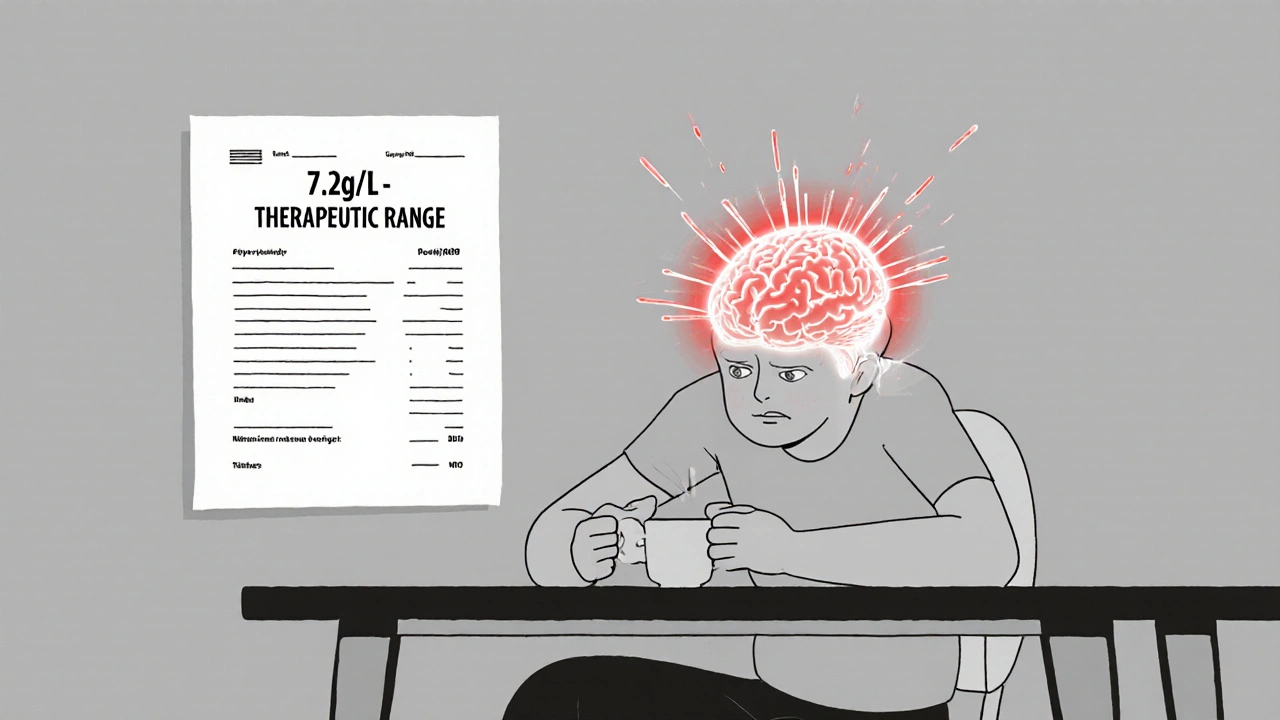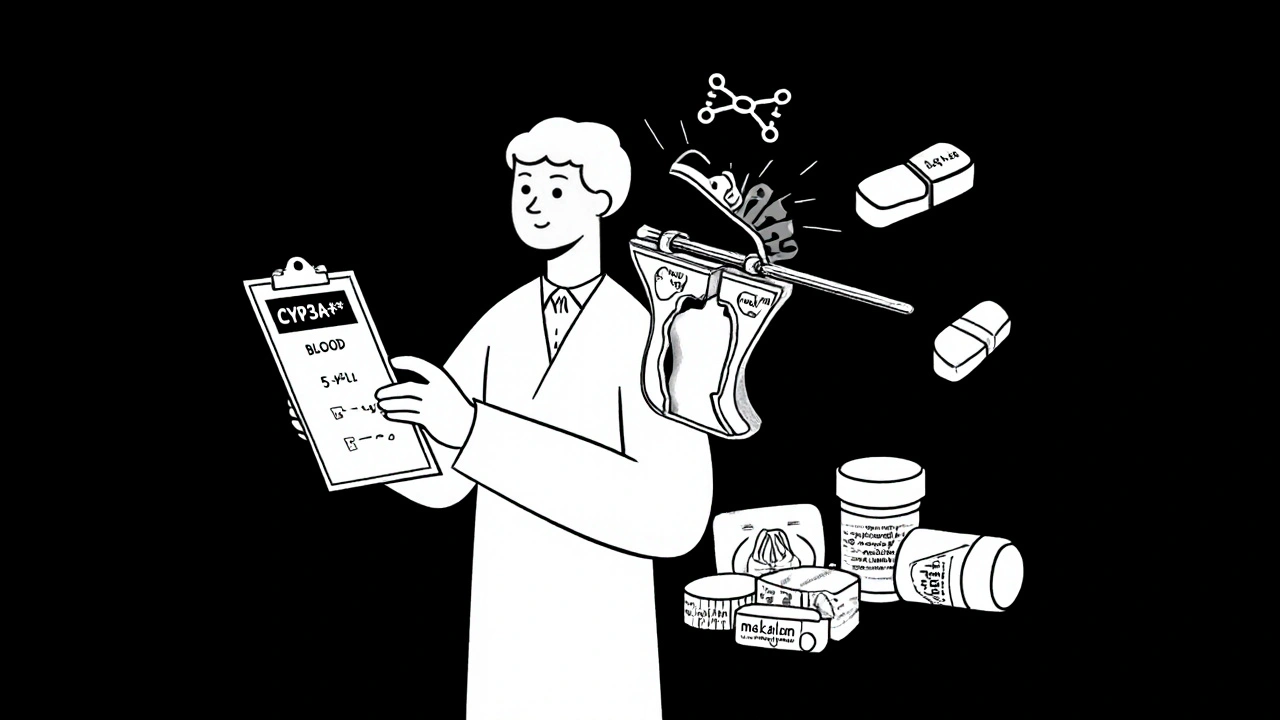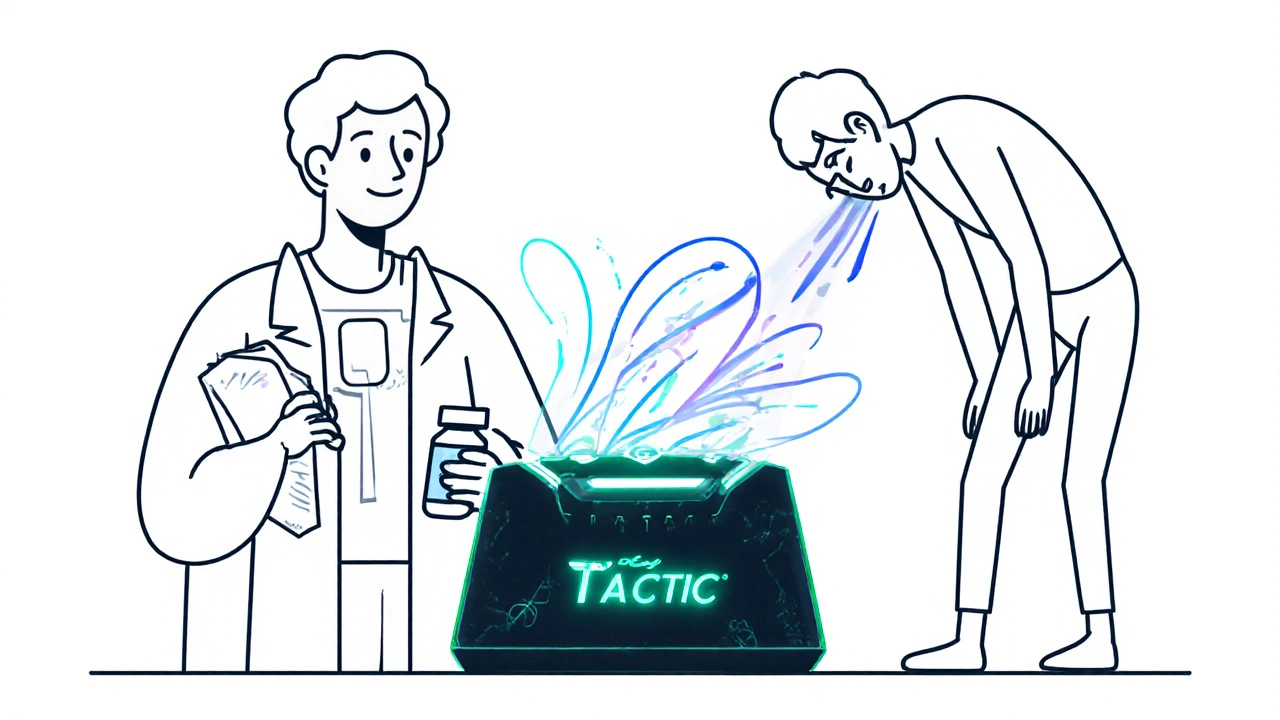
Tacrolimus Neurotoxicity Risk Estimator
Assess your personal risk of neurotoxicity symptoms based on key factors from the article. This tool helps you identify potential warning signs and know when to consult your transplant team.
Risk Assessment
When you’ve just had a transplant, the last thing you want is to feel like your body is betraying you. You’re taking tacrolimus to keep your new organ alive, but suddenly your hands won’t stop shaking. Your head pounds like it’s under pressure. You can’t sleep. You’re not hallucinating-you’re just… off. This isn’t anxiety. It’s not stress. It’s tacrolimus neurotoxicity, and it’s more common than most doctors admit.
What Tacrolimus Neurotoxicity Really Looks Like
Tacrolimus is one of the most powerful immunosuppressants ever developed. Since its approval in 1994, it’s become the go-to drug for kidney, liver, heart, and lung transplant patients because it cuts rejection rates by 20-30% compared to older drugs like cyclosporine. But that power comes with a cost. About 20-40% of people taking tacrolimus develop neurological side effects. For many, it starts with something small-a slight tremor when holding a coffee cup. That’s the most common sign, hitting 65-75% of those affected. Headaches follow close behind, reported by nearly half of patients. These aren’t your usual tension headaches. They’re deep, constant, and often resistant to painkillers. One patient on a transplant forum described it as "a vise tightening around my skull every single day." Others report tingling in their fingers, trouble walking, or sudden confusion. In rare cases, it escalates to seizures, speech loss, or even a condition called Posterior Reversible Encephalopathy Syndrome (PRES), which shows up as swelling in the back of the brain on an MRI. The scary part? These symptoms don’t always show up when blood levels are high. Some patients develop tremors at 7.2 ng/mL-right in the "therapeutic" range. Others stay symptom-free at 16 ng/mL. That’s why simply checking blood levels isn’t enough. Your brain might be more sensitive than your doctor’s lab report suggests.Why Blood Levels Don’t Tell the Whole Story
Doctors rely on blood tests to guide tacrolimus dosing. For kidney transplants, the target is usually 5-15 ng/mL. For liver and heart, it’s 5-10 ng/mL. But here’s the problem: these numbers were set based on rejection prevention, not brain safety. Studies show that neurotoxicity can happen even when levels are perfectly "on target." A 2023 study found that 21.5% of patients with early neurotoxicity had levels above 15 ng/mL-but the average levels between those who developed symptoms and those who didn’t were nearly identical. That means something else is going on. Turns out, your genes matter. About 15-20% of people carry a variant called CYP3A5*1, which makes them metabolize tacrolimus much faster. Their bodies clear the drug quickly, so doctors often bump up the dose to keep levels in range. But that higher dose means more tacrolimus slips through the blood-brain barrier. The result? Neurotoxicity at levels that look fine on paper. It’s not just genetics. Other factors pile on. Low sodium, low magnesium, or taking other drugs like antibiotics (linezolid), sedatives (midazolam), or antipsychotics (risperidone) can make your brain more vulnerable. Even dehydration can tip the balance. One patient in Australia saw her tremors vanish after correcting her sodium levels-without changing her tacrolimus dose at all.Who’s Most at Risk?
Not everyone has the same risk. Liver transplant patients are hit hardest-35.7% develop neurotoxicity. Kidney recipients are next at 22.4%. Heart and lung patients have lower rates, around 15-19%. Why? The liver is the main organ that breaks down tacrolimus. After a liver transplant, the new liver might process the drug differently, or the patient might have had liver damage before transplant that altered how the drug behaves in the body. Age matters too. Older patients are more likely to experience symptoms. So are those with prior neurological conditions-migraines, epilepsy, or even a history of stroke. And it’s not just about the drug. The first 30 days after transplant are the danger zone. That’s when levels are still being adjusted, infections are common, and the body is under maximum stress.
What Happens When Symptoms Show Up?
Too often, doctors dismiss tremors or headaches as "normal post-op stress." Patients report waiting weeks before anyone connects the dots. That delay can make symptoms worse. By the time PRES is diagnosed, it can cause permanent brain damage. The good news? Most cases get better fast-once you know what’s causing it. In 78% of cases, symptoms improve within 3-7 days of adjusting the drug. That usually means one of two things: lowering the dose, or switching to another immunosuppressant like cyclosporine. Dose reduction is often the first step. One patient reduced his tacrolimus from 0.1 mg/kg to 0.07 mg/kg and saw his tremors disappear in 72 hours. His rejection risk didn’t spike because the lower dose was still enough to protect his kidney. That’s the sweet spot: enough to prevent rejection, but not so much that it fries your nerves. Switching to cyclosporine is another option. It’s less effective at preventing rejection-about 20-30% higher risk-but it causes neurotoxicity half as often. For patients whose tremors are so bad they can’t hold a spoon or write their name, that trade-off is worth it.What You Can Do Right Now
If you’re on tacrolimus and noticing symptoms:- Track your symptoms daily: When did the tremor start? How bad is the headache? Is it worse in the morning or after meals?
- Check your electrolytes. Ask your doctor for a basic metabolic panel-especially sodium and magnesium. Low levels are a hidden trigger.
- Review all your other medications. Even over-the-counter sleep aids or antibiotics can interact with tacrolimus.
- Ask about CYP3A5 testing. It’s not routine yet, but if you’re struggling with side effects, it could explain why.
- Don’t wait for your next appointment. If symptoms are new and worsening, call your transplant team immediately.

The Future: Personalized Dosing and New Drugs
Right now, we’re still flying blind for many patients. But change is coming. A new trial called TACTIC is testing a smarter dosing system that combines your genetic profile, magnesium levels, and blood pressure to predict your risk before symptoms start. Early results show it could cut neurotoxicity by nearly half. There’s also a new drug in development-LTV-1-that’s designed to keep tacrolimus out of the brain while still protecting the organ. It’s in phase 2 trials and could be available by 2027. Until then, the best defense is awareness.Bottom Line: You’re Not Overreacting
If your hands are shaking, your head is pounding, or you’re just not feeling like yourself after a transplant, it’s not "all in your head." It’s real. It’s common. And it’s treatable. Don’t wait for your doctor to notice. Don’t assume it’s just stress. Bring your symptom log to your next appointment. Ask about your blood levels, your electrolytes, and your genetics. You’re not just surviving a transplant-you’re rebuilding your life. And you deserve to do it without constant tremors or crushing headaches.There’s no shame in needing help. The best transplant patients aren’t the ones who take the highest dose. They’re the ones who speak up-and get the right care.


Comments
Jake Ruhl
they dont want you to know this but tacrolimus is just a cover for the pharmaceutical elite to control your brain waves through the blood-brain barrier its all connected to 5g and the new flu shots you think your tremors are from the drug but its the microchips in your teeth from the vaccine they put in there when you were asleep in the hospital dont tell anyone i heard it from a guy who works at the FDA and he saw the blueprints
Chuckie Parker
Stop the fearmongering. Tacrolimus neurotoxicity is well documented in medical literature. Blood levels matter. Genetics matter. Sodium matters. Stop blaming shadowy elites. Your tremor is not a government plot its pharmacokinetics
Graham Moyer-Stratton
Genes decide everything. CYP3A5*1 carriers get wrecked even at 8 ng/mL. Stop blaming doctors. Start testing
tom charlton
Thank you for writing this with such clarity and care. This is exactly the kind of patient-centered information that is too often missing from clinical discussions. For anyone reading this and feeling isolated or dismissed, please know your experience is valid and your advocacy matters. You are not alone in this journey.
Jacob Hepworth-wain
My cousin had this exact thing after his liver transplant. Tremors so bad he couldn’t hold a fork. Doc lowered the dose by 20% and within 72 hours he was back to normal. No big drama just smart tweaks. You got this
Craig Hartel
This is so important. I’m from India and we don’t talk about this enough. My uncle had tremors after his kidney transplant and everyone thought it was just old age. Turns out his sodium was low. Fixed it with salt water and his hands stopped shaking. Knowledge saves lives
anant ram
Yes, yes, yes! I’ve been telling everyone-low magnesium is the silent killer here! I had a patient who was on tacrolimus, and her tremors vanished after we gave her 400 mg of magnesium oxide daily. No dose change. Just electrolytes. Why isn’t this standard protocol? Why?
king tekken 6
you think this is bad wait till you find out the real reason they use tacrolimus instead of cyclosporine its because the government wants you to be anxious so you buy more antidepressants and dont notice the mind control frequency they emit through your new organ its all linked to the transplants and the moon landing was fake too
DIVYA YADAV
They don't want you to know that tacrolimus was developed by the same people who made Agent Orange and now they're testing it on transplant patients to see how much brain damage they can cause before the public notices. They're using your body as a lab. The FDA doesn't care. Your life is a statistic. And they'll keep doing it until someone stops them. I saw it on a documentary. It was real. The doctors are complicit. You're being used.
Kim Clapper
While I appreciate the effort to raise awareness, this post lacks methodological rigor. The assertion that "doctors dismiss symptoms as stress" is anecdotally driven and statistically unsupported. Furthermore, the recommendation to pursue CYP3A5 testing without established clinical guidelines is premature and potentially harmful. I urge caution.
Bruce Hennen
Most people who get tremors from tacrolimus are just noncompliant or overdosing. If your levels are in range and you still have symptoms, maybe you’re not taking it right. Or maybe you’re just weak. This isn’t a crisis. It’s a compliance issue.
Michael Segbawu
bro i had this so bad i couldnt type for weeks thought i was having a stroke but then i found out my sodium was 130 and i was dehydrated from drinking too much coffee after transplant. fixed it with salt and water. no dose change. doctors dont tell you this but your body is a machine and it needs fuel
Aarti Ray
thank you for writing this. i was scared to speak up after my transplant because everyone said "just wait it out" but my hands were shaking so bad i dropped my baby’s bottle. when i asked about tacrolimus they looked at me like i was crazy. i wish i had read this sooner